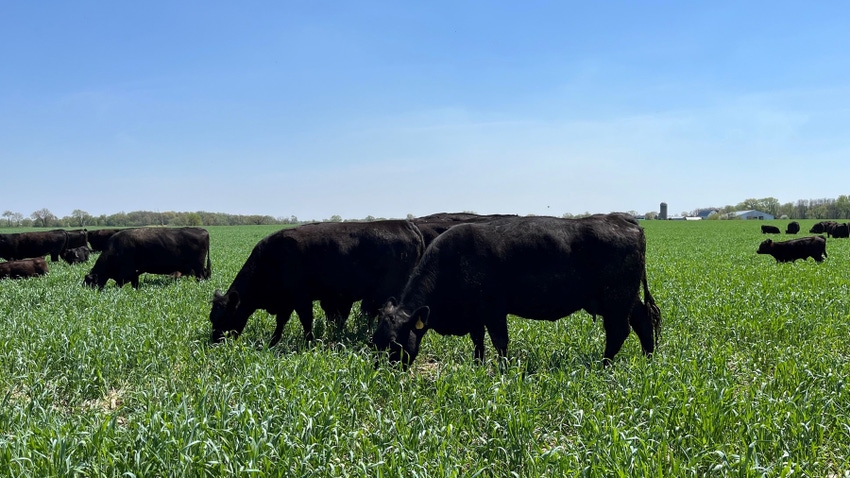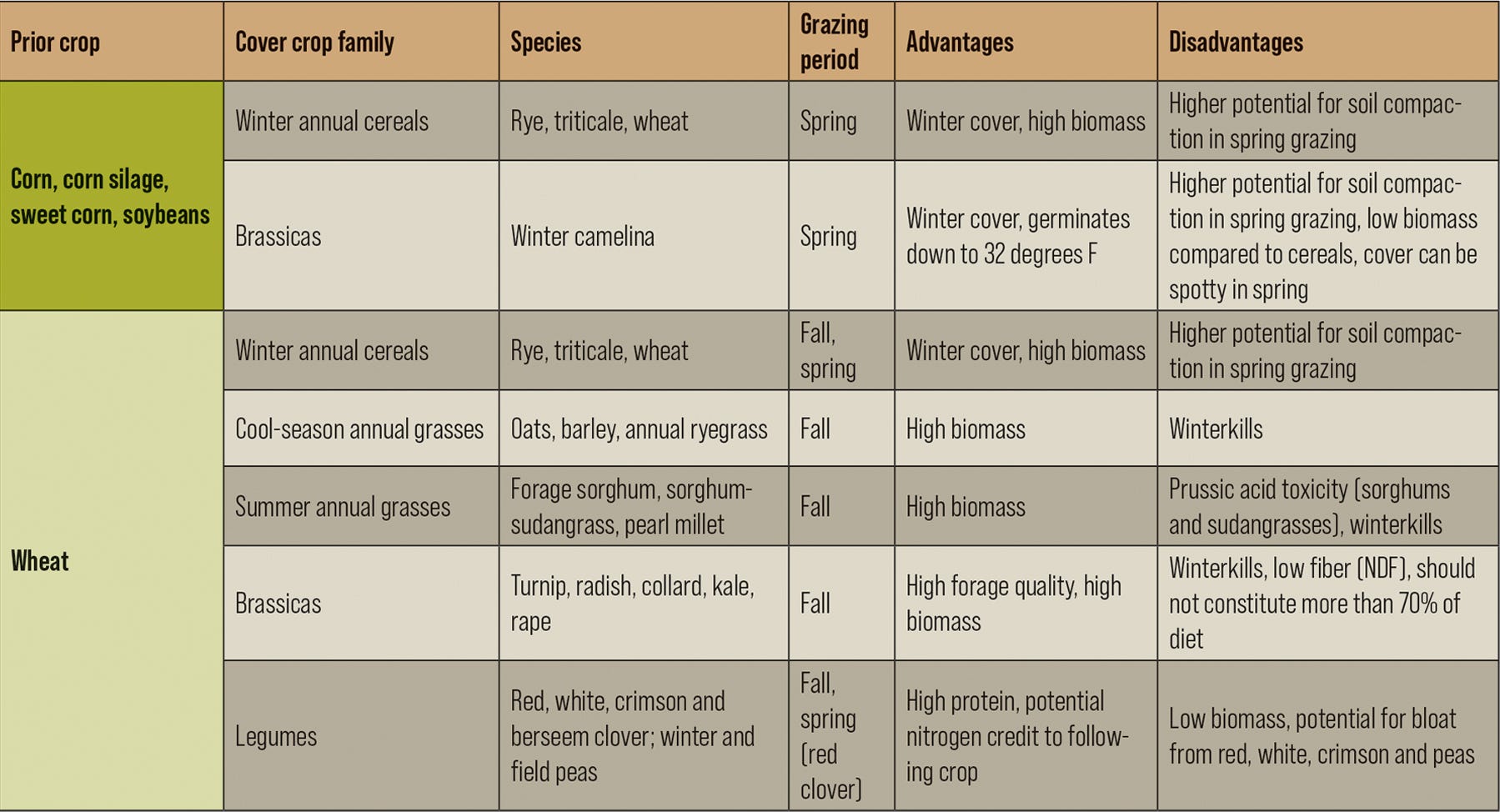August 8, 2023

by Will Fulwider
Variable corn stands, short hayfields and parched pastures are par for the course with the drought this growing season. As a result, graziers are already dipping into stored winter feed, while confinement farmers may be preemptively buying as supplies tighten, pushing up prices and potentially limiting supply.
Annual cropping systems like corn, soybeans and particularly wheat provide opportunities to squeeze more growing degree units out of a year by integrating cool-season cover crops. Grazing these covers helps to stretch stored feed and provide a low-cost alternative to feeding hay in late fall and early spring in leaner years. Savings include diesel for forage harvest and manure hauling, hours and wear on equipment, and the associated labor costs. Grazing also returns 80% of the nutrients immediately back to the soil. There are several opportunities for cover crop establishment outside of the normal cropping calendar that can be used for grazing.
See the table below for cover crop options for grazing following cash crops. Mixtures of these cover crops allow farmers to maximize fall growth and keep something that overwinters, balance livestock diets, and limit disadvantages or possible toxicities (more on that later). Overlapping cover crop establishment and cash crop growth by frost-seeding small-seeded legumes such as red clover into growing winter wheat can help the covers get a jump start on growth after wheat harvest and not affect wheat yield. While you can usually bank on volunteer wheat to grow into the stand of red clover and provide important fiber to the lush cover, some producers also drill in oats or rye immediately after the wheat harvest to prevent bloat.

Things to consider when grazing covers
Grazing cover crops is no entry-level practice and requires some forethought, including:
Fencing. Is there a perimeter fence around the field? If not, are your animals well-trained to electric fence so you can be comfortable with a single, double-strand or net electric polywire between your animals and the highway? It may be best to stick to interior fields or less trafficked areas initially.
Water. Is there a well at the field, or will you have to truck in water? Consider the associated costs and labor. There are plenty of examples of innovative solutions to temporary watering, including troughs mounted on trailers and sleds, with or without water pipe or hose hookups.
Cover crop selection. Match covers with the animal. Dietary requirements depend on the type of animal and its class. Lactating animals require higher protein content than nonlactating or dry ones; therefore, covers that include legumes such as red clover may be necessary to keep up milk production.
Soil compaction. Minimize compaction by ensuring soils are dry enough to graze. While studies have shown that long-term grazing on crop land does not reduce yields in cash crops, farmers need to be vigilant in taking livestock off the covers in saturated soils to reduce compaction. This is especially important in grazing winter cereals, as soils are often saturated and sloppy in the spring. Overwintering cover crops like winter rye help to take up some of that moisture, making it easier to graze and to be ready for planting.
Grazing restrictions. Some commonly used herbicides, especially those with extended residual effects, have long periods prohibiting grazing following application. Some herbicide residuals may also affect the establishment of the cover crop. Read the label for restrictions.
Forage-related toxicities. Two toxicities to be aware of are prussic acid, in summer annual forages like sorghum and sudangrass species, and nitrate toxicity, in nonsummer annual covers. In sorghums and sudangrasses, prussic acid levels are elevated in new growth as well as after frost. Avoid grazing until the crop is at least 18 inches high and a week following a frost. Cereal crops and brassicas readily scavenge nitrates in the soil and accumulate it in their biomass, especially closer to the soil and in adverse growing conditions like drought.
Always take a sample for nitrates prior to turning the livestock out on the covers, consider mixtures to limit intake of nitrate-accumulating plants, and rotationally graze to leave at least 6 inches of residual if nitrates are of concern.
Fulwider is the University of Wisconsin Extension regional crops educator for Dane and Dodge counties.
Read more about:
GrazingYou May Also Like




